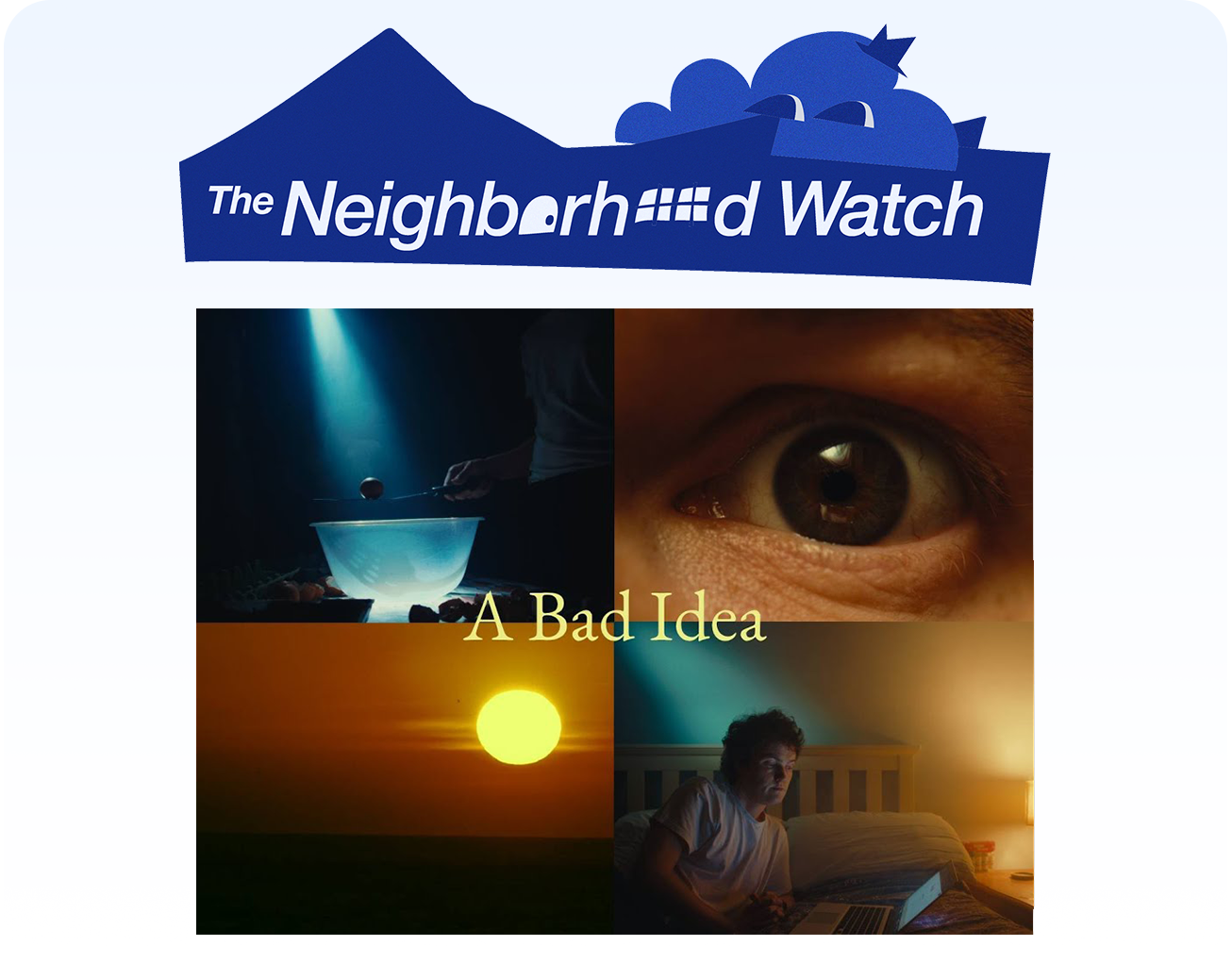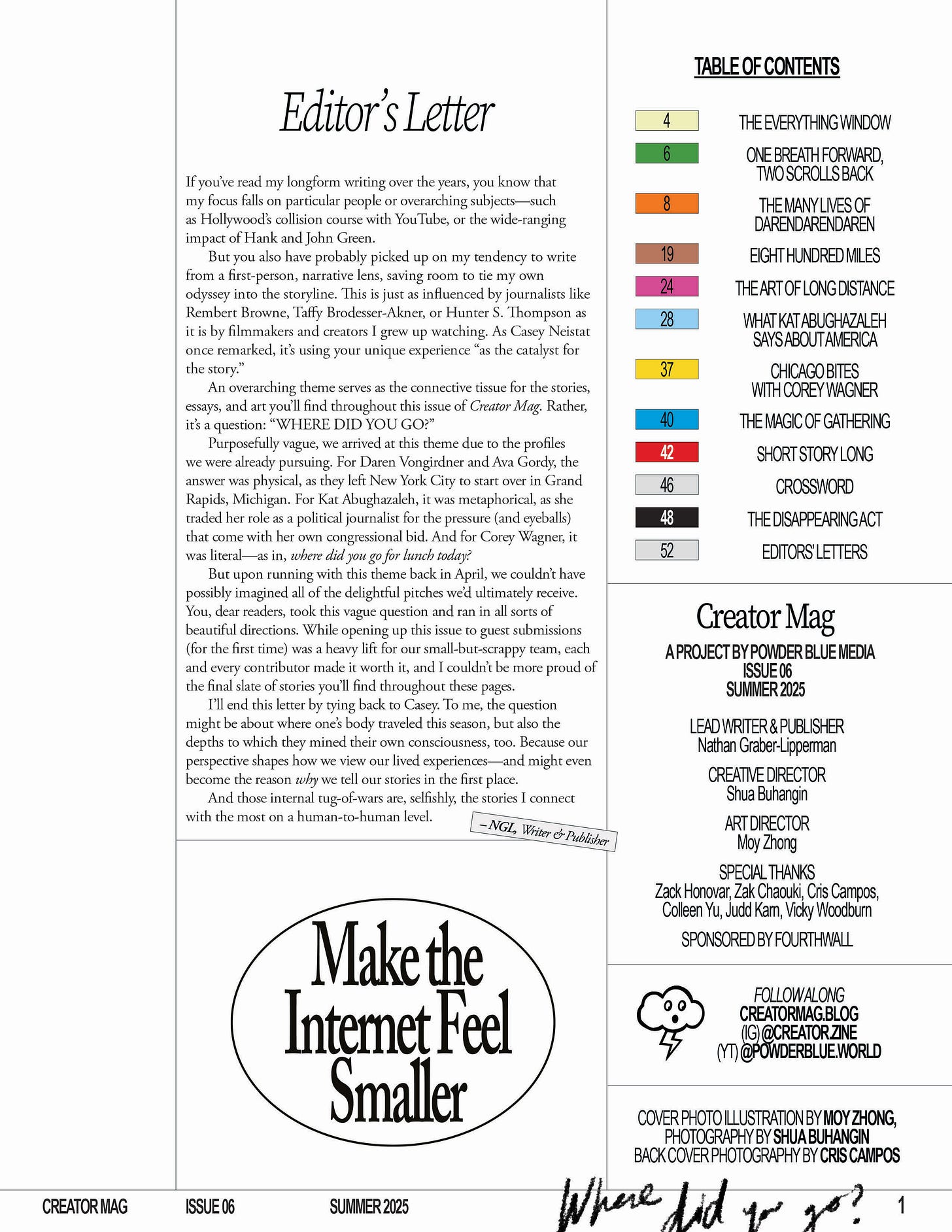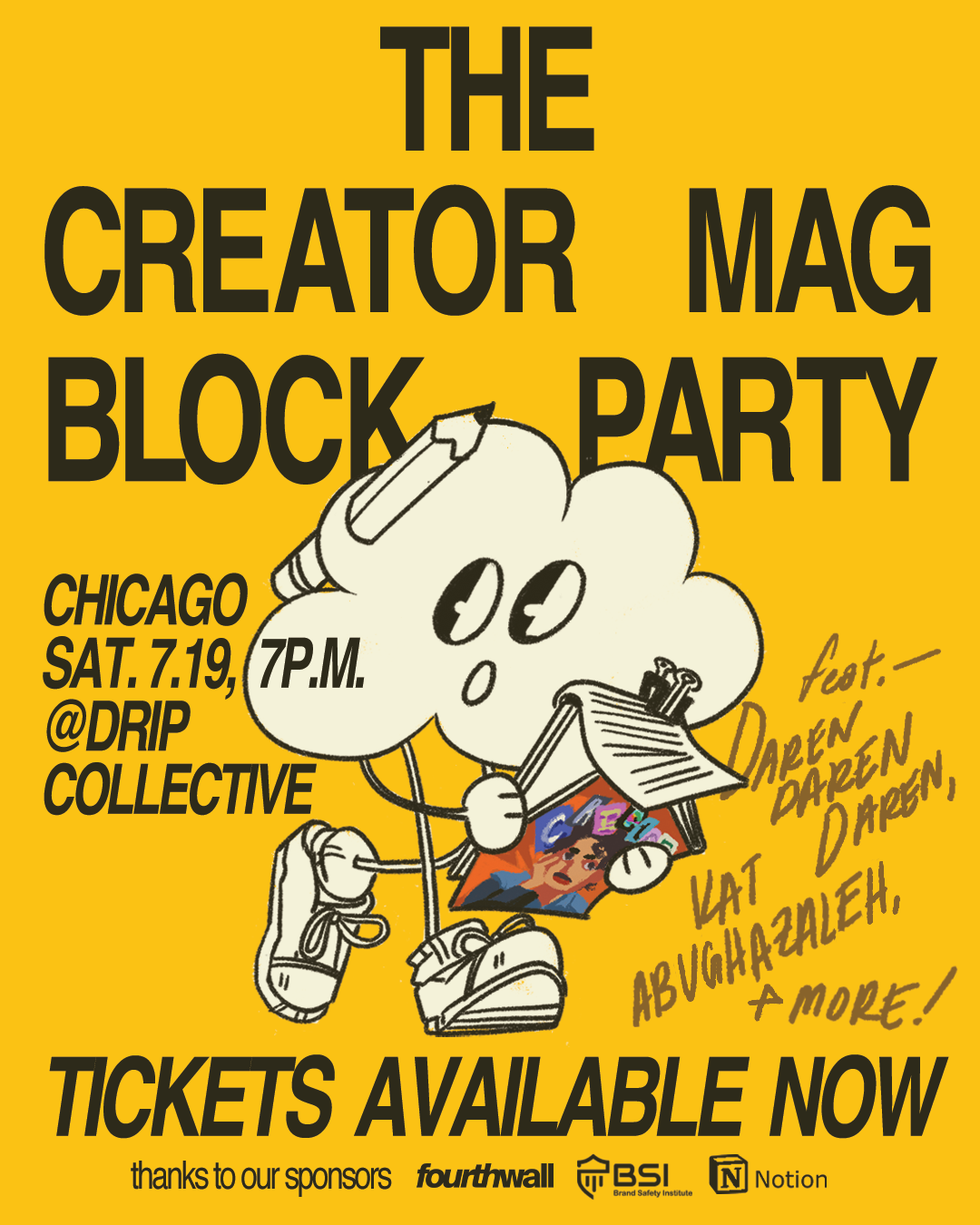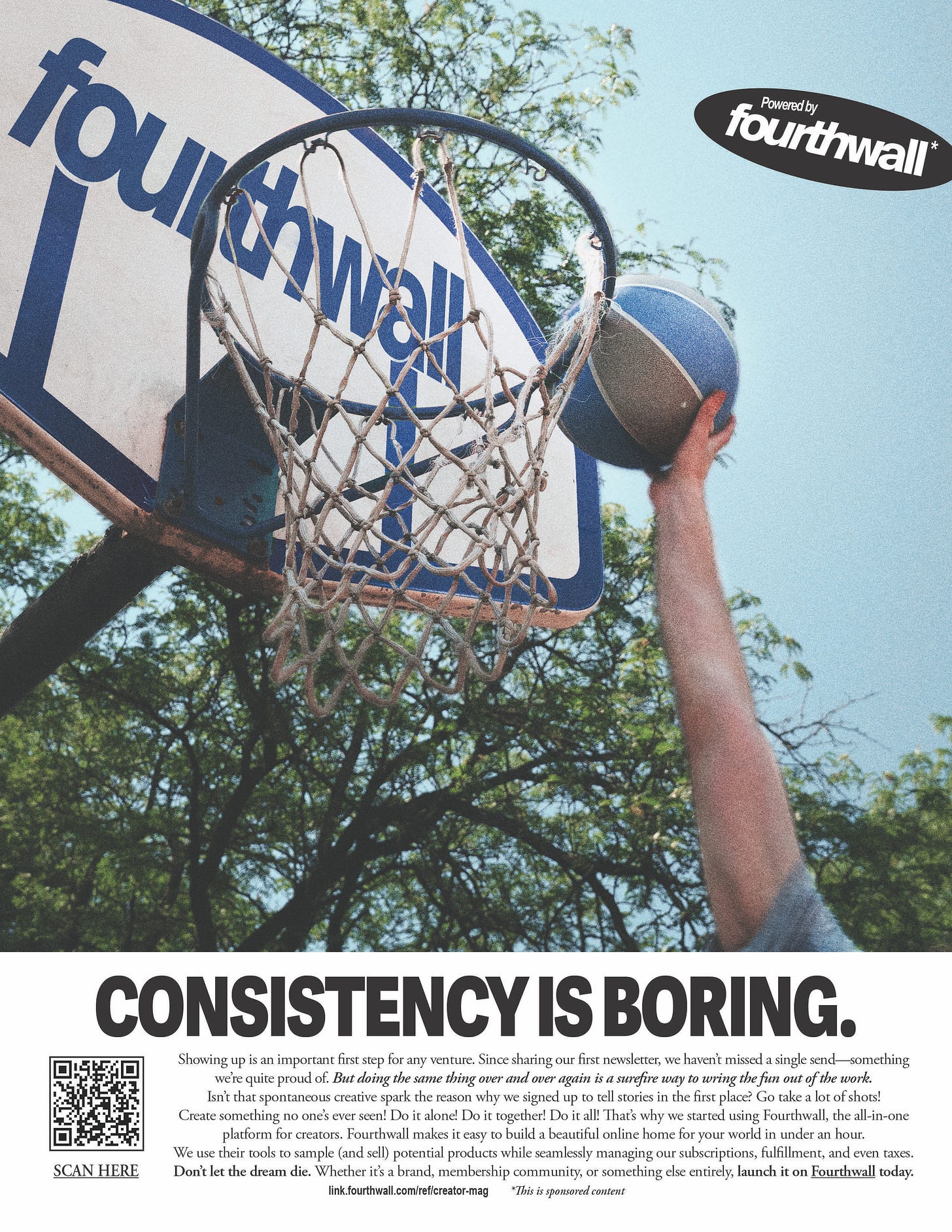This is A Bad Idea 💭
Plus: The mag drops in two days!
blog.seventy-six // Twwwwwooooo days!
We dropped Creator Mag Issue 5 on March 29. We took a small break to recharge, then we hopped right back on the horse. And over the last several months, we created another beautiful print zine, featuring 21,339 words from over ten unique contributors.
Tomorrow, the magazines arrive at the studio, and we’ll get the chance to hold them in our hands and read through the spread. Saturday’s Block Party attendees will be the first to receive their copies; after that, we’ll begin shipping out all orders the following week.
It’s sappy, but it bears repeating: Without you, none of this would be possible. To our annual members, we wanted to express our gratitude for your commitment, believing in our mission…before even receiving your first print copy.
To everyone who’s preordered this issue, thank you for your support—we’re proud of each new entry, but we’re especially proud of this one, too.
And to all our readers and viewers, across channels: Whether you second-screened our latest video or forwarded our last blog to a friend, we appreciate you for tuning in. The Internet is a big place these days. It means the world that you’ve actively decided to hang out in our small corner of it.
To everyone popping out to the Block Party, we’ll see you soon. RSVP here if you haven’t already—and consider inviting a friend (or two).
In the meantime, I’m handing the mic back over to Judd the Intern. Scroll on for a fresh edition of Neighborhood Watch.
— NGL
P.S. Last blog, we shared the Editor’s Letter from our upcoming print issue. You can read it here.
Sponsored by Fourthwall
Filmmaking is a Sport 🏀
Casey Neistat once said this: Filmmaking is a sport.
So we took his words literally, shooting a Fourthwall integration at the basketball court behind our studio.
You might’ve seen the commercial that emerged in our latest video episode. But we also turned that shoot into the design above, which is inspired by those classic print Nike ads—and appears on Page 2 of our new magazine.
As we’re over halfway through 2025, I wanted to take a second to thank Will, Walker, and the entire Fourthwall team again for coming onboard as our Title Sponsor this year. Partnerships are great, sure, but they’re far better when you legitimately love using the product.
And we’ve built our entire online shop on their platform—dropping each magazine, sampling new products, and sharing exclusive, members-only blogs, all on Fourthwall.
If you want to join MKBHD, Philip DeFranco, and 200,000+ other creators in launching your brand on Fourthwall, get started (for free) today.
Video: ‘A Bad Idea’ (2024)
Creator: Conor Flynn
Runtime: 2m 24s
Review by: Judd Karn
The bad idea.
The fear of it discourages many from ever creating in the first place. But for Irish filmmaker Conor Flynn, it was the spark.
Don’t be scared, though. Flynn’s film isn’t another one of those motivational “cinematic” pieces that have seemingly carved out a large corner of the Internet in recent months. It actually has a rather silly, albeit grounded in reality, thesis: to recreate a shot from a movie
The idea’s not too novel—creator William H. Baker blew up about a month prior with his video that recreated shots from Oppenheimer. But the plot isn’t exactly the point of this short. Flynn’s two-minute narrative plays within the confines of a ridiculously linear objective, a simple task: recreating an “egg trick” from an episode of the TV show Hannibal. But where it gets intriguing is in the economics of the film.
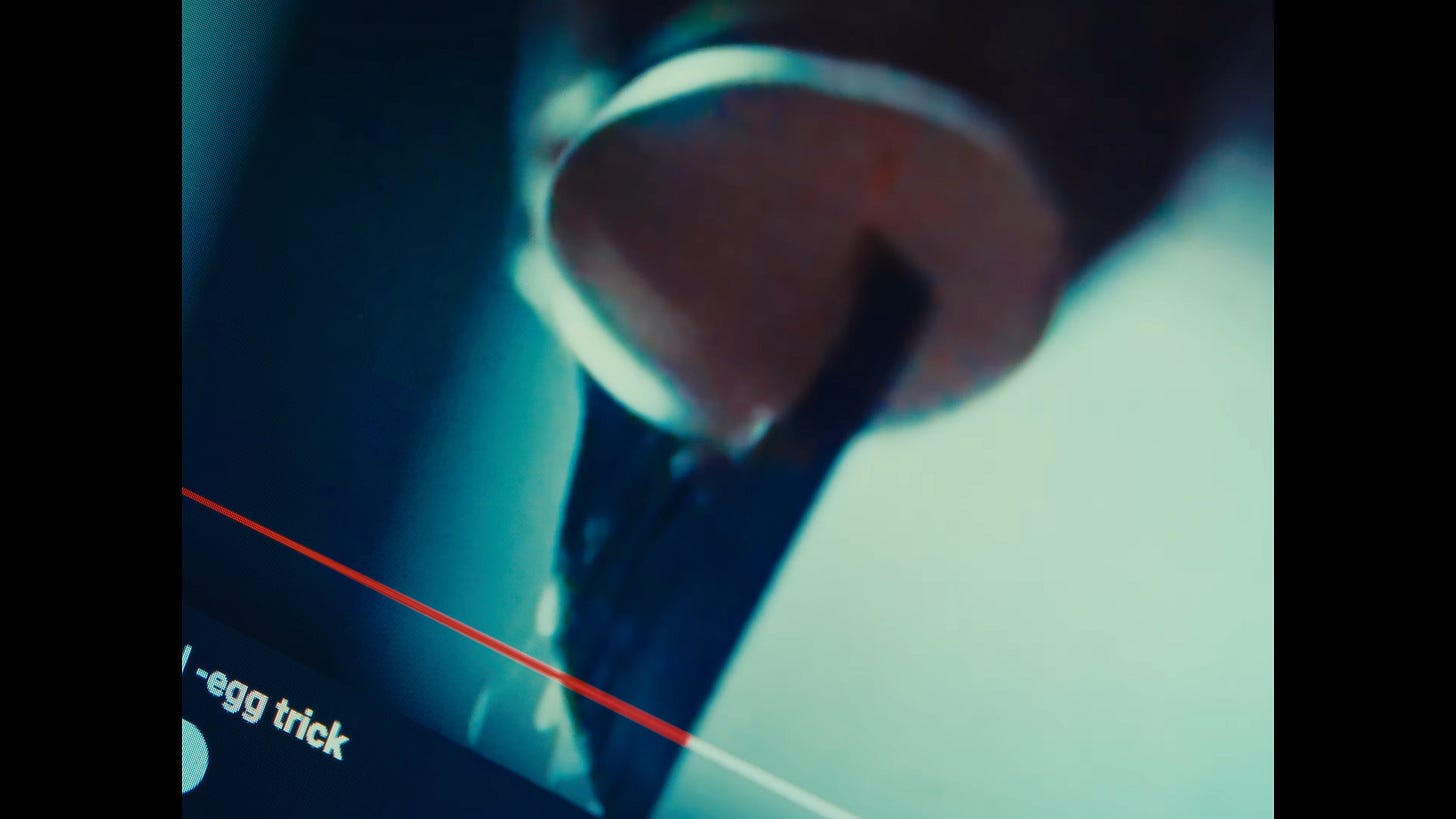
The Economics of ‘A Bad Idea.’
No, I don’t mean the cost of the obscene amount of eggs used in this video—although that did seem to entertain a surprisingly large quantity of American commenters. I mean the economics in terms of Flynn’s restriction of creative elements within this two-minute, twenty-four-second video. No frame is wasted; every second contains a piece of information directly relevant to driving the story forward, with many also setting up payoffs.
One commenter shared his disbelief that Flynn managed to fit “Chekhov’s Gun”* in by looping in the video’s punchline with a seemingly throwaway line at the start of the film. After reading that comment (and two or so rewatches), you realize just how much everything follows this guide for efficiency, and how tightly wound together the story is.
Directly prior to the throwaway line, we see the protagonist search “how to make good videos” online. A (satirically doctored) comment in a thread by Oscar-winning cinematographer Roger Deakins, “Just make all the lighting blue & yellow bro,” is the first to pop up.
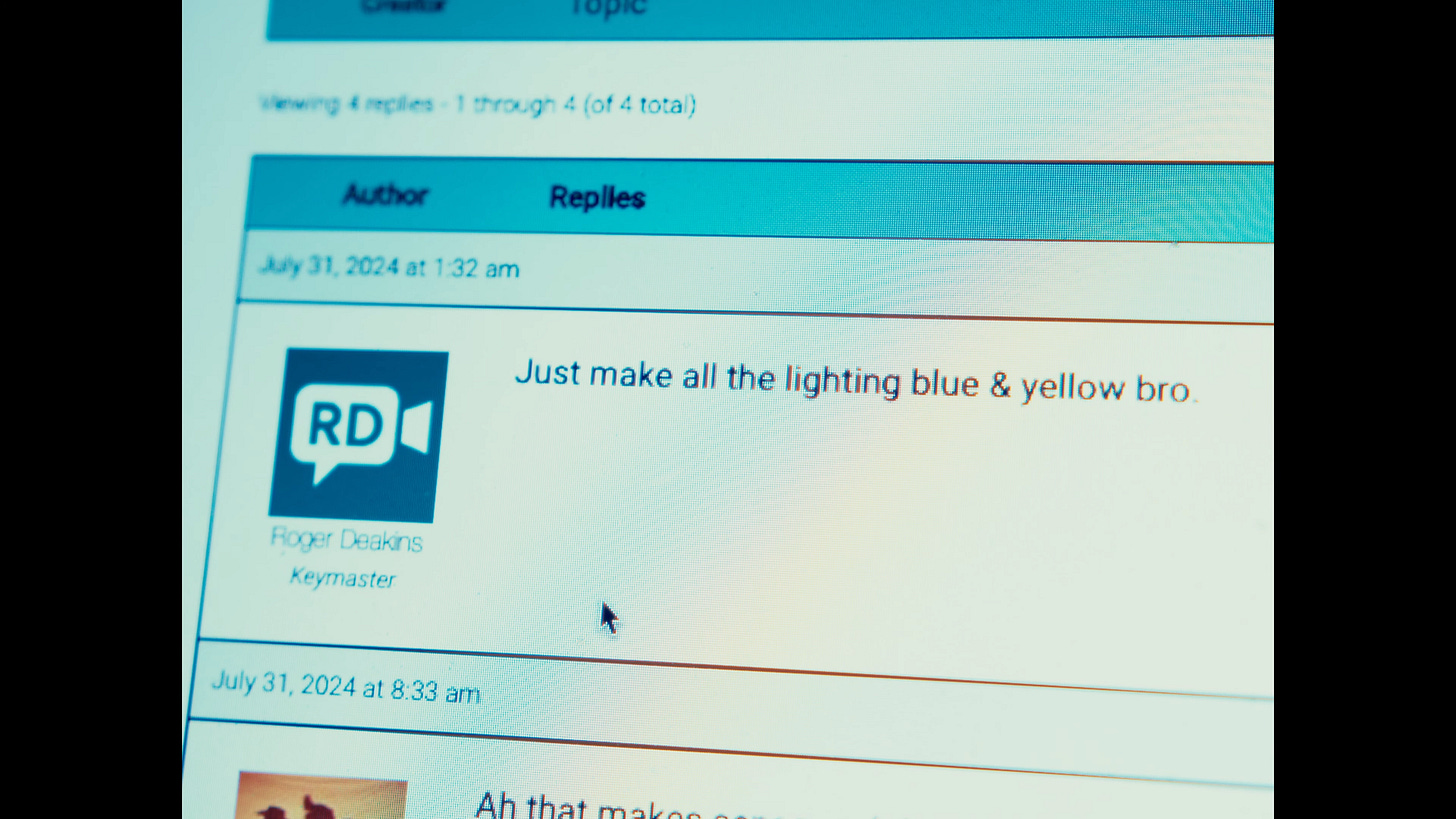
We never actually know whether the protagonist followed this advice, since, as the ending reveals, the in-world camera wasn’t recording anything. But what we, the viewer, do know is that the video, and what we end up seeing, is clearly filtered through this subjective lens, and thus likely through the protagonist's distorted perspective.
The score and sound design hyperbolically emphasize moments thrilling to the protagonist and, many times, completely visually divert from the reality of the situation—seen most clearly at 1:49.
We’re not seeing objective events—we’re seeing his version of the story.
This microcosm aptly represents how Flynn handles the majority of the other elements and the film’s overall topic as a whole: very unseriously, but with a large lot of sincerity and meaning behind it. The advice to “just make all the lighting blue & yellow bro” begins as a satirical nod to Internet filmmaking clichés, but, upon reflection, evolves further into a commentary on the dynamics of the bad idea and our conceptions of such.
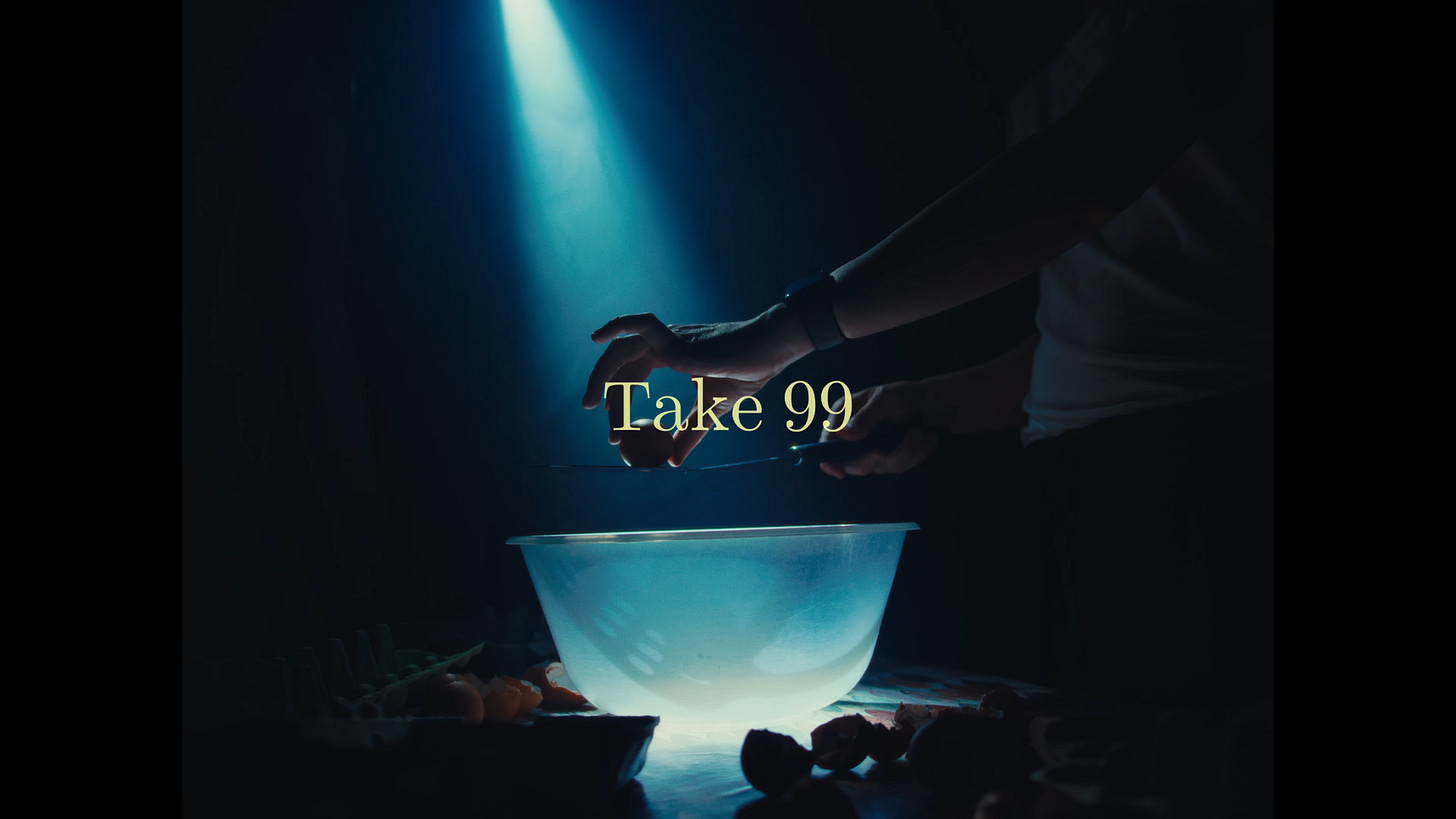
The color choice could have been purely aesthetic. It could also be a deliberate nod to Whiplash (2014), one of the short’s clearest stylistic ancestors. Like Whiplash, A Bad Idea follows an obsessive protagonist chasing a singular goal to the point of delusion. Blue and yellow—colors often tied to clarity, ambition, and creative intensity—fit right in. Or maybe Flynn just thought they looked cool.
But maybe that ambiguity is the point.
That’s where I believe the ingeniousness of this short lies. Whether intentionally or instinctively, Flynn weaves in the “bad idea” metanarrative—one that actively invites the viewer to question his intentionality. Take the moment at 0:15, for example: the protagonist clicks on an article titled “David Fincher used smoke in his videos,” and rather than writing a full fake article, Flynn instead addresses the viewer directly, “Yes, I know, Fincher notably DOES NOT use smoke anymore. Please unpause the video.”
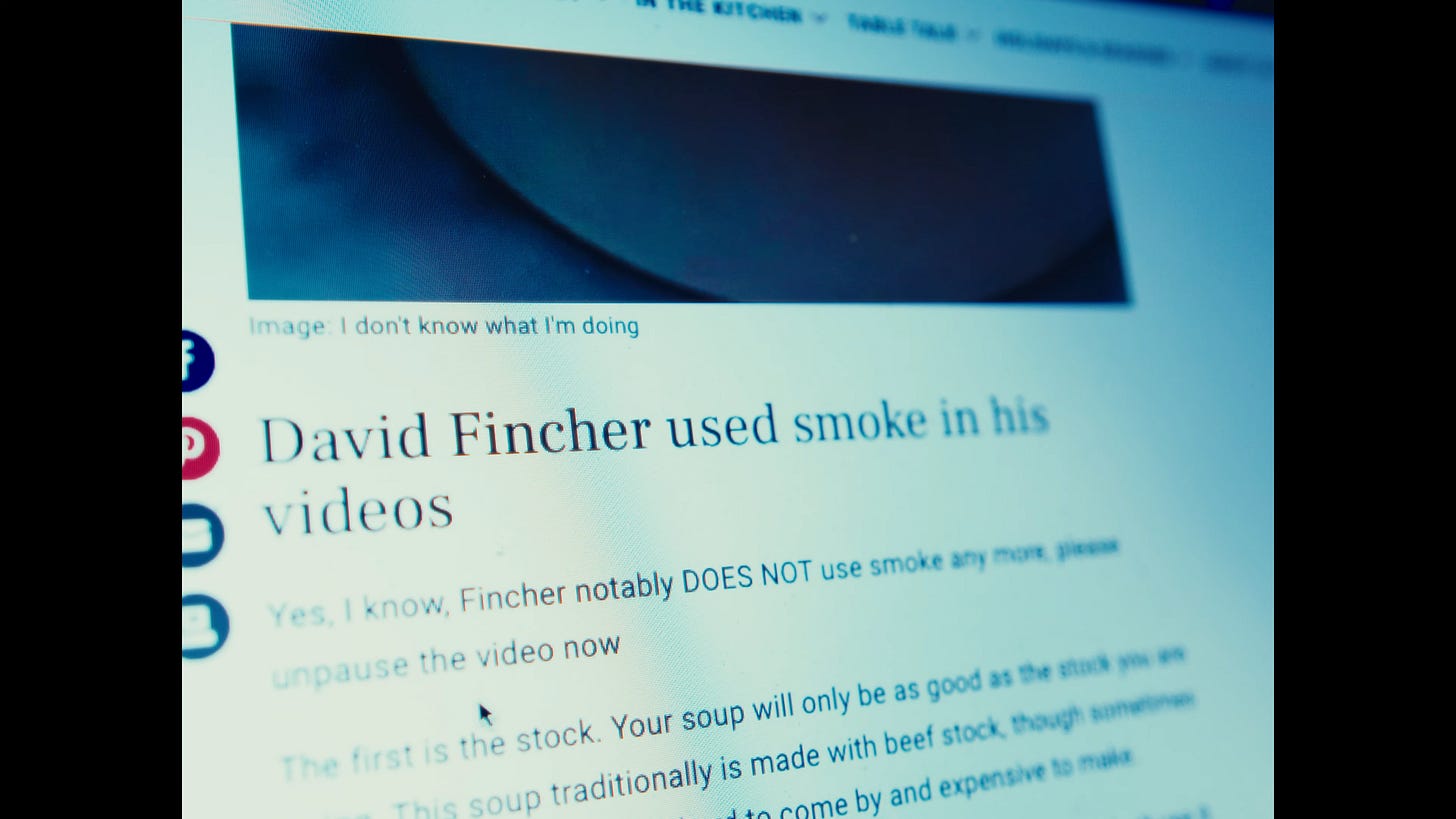
It’s a moment that deliberately takes you out; a moment of self-sabotage—or maybe self-awareness. By leaving parts of the work intentionally “unfinished,” Flynn may be doing exactly what the title suggests: embracing A Bad Idea in all its flawed, clever, and quietly self-aware glory.
Judd’s Score: 4/5
‘The Most Important Movie Of The 21st Century’ (2025)
Creator: Patrick (H) Willems
Runtime: 1h 3m
Patrick (H) Willems has been in the YouTube game for a while, and pretty consistently, at that, steadily releasing film essays that have grown in both depth and runtime over the years. At this point, you’d be shocked to see a runtime of his short of thirty minutes. But for good reason—his catalog is concerningly binge-able.
Each video is nothing short of a deep, thoroughly-investigated dive into whatever topic tickles Willems’ fancy. At the same time, Willems understands the assignment; he’s thoughtful, but never pretentious, oftentimes “gamifying” the analysis, indulging in entertaining tangents, or featuring Nobbles, the channel’s charmingly-annoying puppet “sidekick.”
This video is no exception. In it, Willems breaks down why the 2008 box office flop Speed Racer, directed by the Wachowskis (of Matrix fame), was not just misunderstood, but a masterpiece years ahead of its time.
Judd’s Score: 4.5/5
‘Live a little’ (2024)
Creator: George Ammerlaan
Runtime: 2m 20s
George Ammerlann has spent a little more than a year posting films like these. They’re short and sweet—sometimes filled with platitude-adjacent themes—but, either way, entirely beautiful, especially when looked at within context.
Like many of us, he spends his free time documenting his life with his iPhone. But where the Amsterdam-based sound designer by day differs is in how he lingers on his documentation. How he crafts his shots, then stitches them all together to create these vignettes of life (his or others). He then outfits these moments with a wondrous soundscape that completely envelops you into his world.
Ammerlann makes you observe and think—stretching these little moments into small eternities of sonder—while narration, whether it be pulled from snippets of pop culture or his own voice, gently underscores exactly what he wants you to feel.
Judd’s Score: 4/5
Thanks for reading! Shoot us a reply, comment, or DM if anything resonated with you in particular—we respond to them all.
* Playwright & short story writer Antoine Chekhov once said: "If you say in the first chapter that there is a rifle hanging on the wall, in the second or third chapter it absolutely must go off. If it's not going to be fired, it shouldn't be hanging there." In other words, if something shows up in a story, it should matter later.




